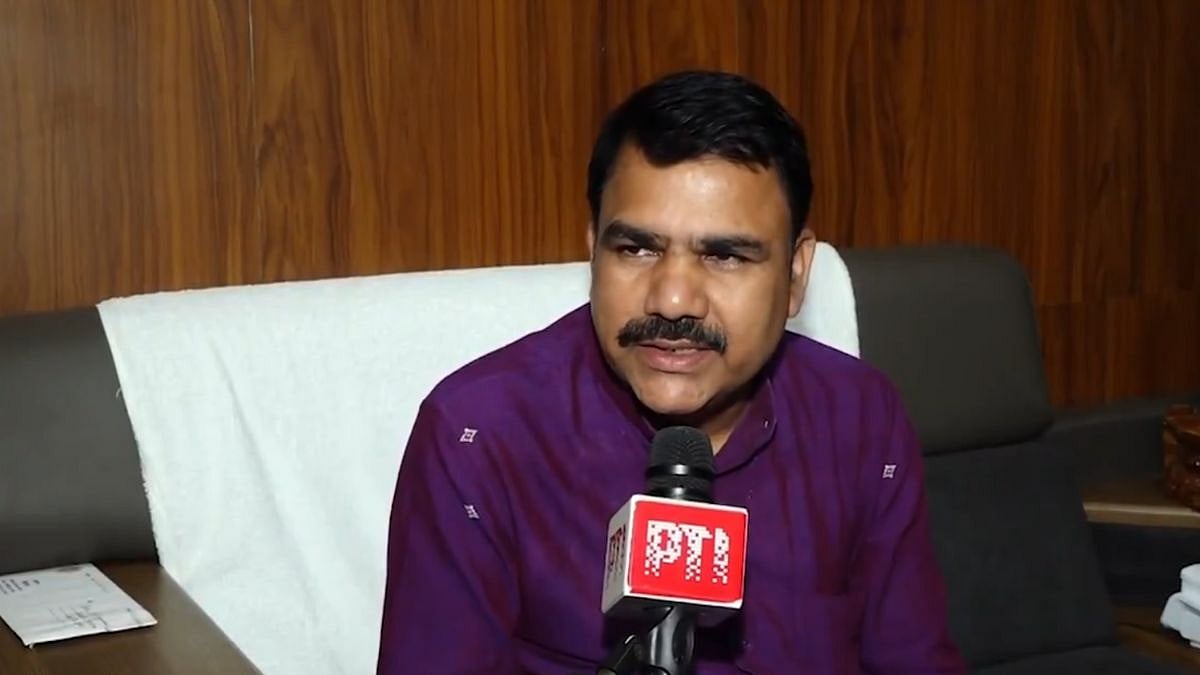Industry 4.0—the next Industrial Revolution
Arvind Sawant, Minister for Heavy Industries and Public Enterprises: Urbanisation is a driver and a consequence of growth. In this context, the question is around ways to manage resources; and the right technologies to apply—in the context of cost, environmental impact and practicality of implementation. That is what policy should seek to address.
Anand Bhade, President Asia Pacific, Tata Technologies: At present, the manufacturing process is getting digitised to the optimum level. In that context, you must understand the prior revolutions and their impact.
The invention of the steam engine can be counted as the first revolution and it had a disruptive impact. The second was the invention of electricity which was all about leverage and improvement of the existing technologies.

The third was the automation/ computerisation wave, which again was a disruption. From that context, digitisation is again set to be a force for leverage and improvement.
Here I should mention that technology will always help you, but you have to take care of your analogues—product positioning, strategy, competitive advantage creation— those are your responsibilities, not that of the technology.
Another suggestion for industrial enterprises is that you should start implementation gradually with a few use cases, like in maintenance or quality management. It may not be wise to do entire transformation at once.
Big impediments would be geographical spread of a company that would inhibit timely and accurate data collection. Generally, people do not accept radical transformation, and so it is better to be slow and steady.
Regarding potential, India has massive headroom in automation itself. The global average of robots per 10,000 workers is 75 and India has an average of three, the efforts of people like Maruti Udyog notwithstanding. With equipment costs coming down, the move will be smoother.
Shailesh Haribhakti, Chairman, Blue Star: Data collection is essential; without that none of the Internet of Things (IoT) technologies can be implemented. Within the overall structure, real-time transparency would improve the quality of data.
That would impact the time, cost and quality in positive terms. Cost curves can be shifted, inventories eliminated, productivity raised in a big way. This also means that reskilling is an imperative because no one wants to become obsolete. This in turn is a big opportunity for educational institutions.
Prahlad Pawar, Chief Technology and Engineering Officer, Tata Projects: Tata Projects have had fast growth and have diversified in various activities —around four times in the last four years.

Now, this has to be managed keeping sustainability and operational safety in mind across our 200 sites all over India and abroad. For that, digitisation is a key strategic tool, which has to be adapted into the organisational DNA.
We use IOT technologies to connect all equipment through sensors, and to obtain data for monitoring of performance and lots of other things. We aim to make processes flexible, production activity smooth and productivity high.
Umesh Durve, CEO, Reliance Jio Maharashtra: We think of Jio as the world's largest start-up. We aim to change lives of people; and disruption would be too small a goal for us. Digitisation is vital because it connects the ecosystem; saves time; and builds a platform for partnerships.
When we look at Telecom 4.0 today, it has been a journey from voice to digital transformation. Three years ago, India had 227 million internet users, and today the number is 677 million.
Of these, 400 million are in rural India which shows that connectivity and digitisation need no longer be urban phenomena. This widens the opportunity geographically—to connect to customers, introduce real-time initiatives, modify mindsets, and enable entrepreneurs.

For the education ecosystem, this depth of connectivity is the opportunity to bring best learning resources even to the smallest of locations.
G K Pillai, MD and CEO, Walchandnagar Industries: Academic institutions must understand that their output is the input for industry, which means the quality is vital. Professors and teachers are resources which industry should tap, whether in managing situations or institutionalising research initiatives.
On the ground, unemployment is a big challenge for the economy. So, how can Industry 4.0 help? Certainly blind replacement of manpower through machines is not the solution.
However, machines would be an option in case of tasks that are done in difficult conditions or hazardous environments. But not as a blanket solution—after all, the purpose of technological advancement is that humanity should benefit.
Kirtiraj Jilkar, Business Head for Solar PV, Operations and Maintenance, Thermax: For Thermax, Industry 4.0 is vital because it involves own operational processes, as well as projects division which handles client assignments. If you look at global figures, the number of connected devices have outstripped the population of the planet.
In that context, let us look at the challenges. First is to convert legacy capabilities built over a long period, to something that robots can understand. Next is to achieve a balance between robots and workforce—neither should be top-heavy, and upskilling should be aimed or achieved.
Third is the financial aspect— how do you quantify the financial benefits and return on investment on the technology? That is necessary for sustainability.
Smart city mission redesigning better cities
Santosh Kulkarni, Managing Partner, India South Asia, IBM: The question here is how do you define smart city in an urban planning sense? Depending on the demographics, the idea of smart city differs across countries around the globe.
City and individual perspectives play a part in defining a smart city. In a smart city, people look for liveability in residence, efficiency in work and commute aspects and all these delivered at a reasonable cost.
Therefore you see there are two aspects to this —technology and human life. We at IBM have participated in the phenomenon of smart cities across many years.
Japan saw smart cities come up in 1965 and China in 1995. In India, we are discussing this in 2019. For each nation with time, the model has evolved.
Munjay Singh, SVP, Infosys: One can understand the evolution of smart city by relating it to evolution of telcom. There are two main differences between a standard phone and a smartphone and that are battery storage and easy operation.
A smartphone is designed to be intuitive. Likewise, when service delivery can be made intuitive from the side of the authorities, a smart city is created.
Given the sheer number of people that India has, service delivery is a big challenge here. Therefore, the model has to be reliant on technology and that technology has to be robust.
Dheeraj Patil, Principal, Green Space Alliance: Today we are looking at a population with 26-28 per cent urbanisation, which can be close to 40 per cent just by 2030.
In absolute numbers, it means 80 million people moving to cities. If we talk in terms of Pune, we are talking of construction of 22 equivalent cities. The challenge is to do this in a structured manner—improve quality of life, maintain efficient work environment, avoid informal and unplanned development like slums and so on.
In the past, industry development was the trigger for cities to come up, which was essentially a reactive model. Now we have to be proactive—essentially focus on people, their needs, current issues, potential future problems—and use technology accordingly. Beyond this is the governance angle from the side of the authorities.
Look at the newly-planned capital of Andhra Pradesh, Amravati, designed on an unoccupied land that will cater to 3.2 million people over the next 20 years. For such level of planning, one has to see where the schools and the hospitals are.
The key process in development of smart city is estimation of requirement of the area. Crowdsourcing can play a key role in increasing accuracy of that estimation and this should take place prior technological adaptation.
Professor (Gp Capt) D P Apte, Pro Vice Chancellor, MIT-WPU: Smart city parameters vary because different people have different cultures and priorities.
Therefore, smart city cannot have a set template. Typically, we see that we create problems—traffic, waste management, water pollution—and then apply solutions. It would be much better if design were enabled to nip these problems in the bud.
For instance, with good road planning commutes can become easier and quicker, which would then avoid or mitigate the phenomenon of people crowding into cities. Solutions must flow from data and technology based tools.
Technology can identify behavioural patterns and endeavour to modify them. For instance, recycling will have to be a component of the core citizen mindset.
For the cost part, a good idea would be to promote startups and small businesses. Lastly, I would focus on manpower competency too, because with all the systems, data is only as effective as the way it is used.
Munjay Singh: Now we come to the measures needed in the areas of cyber security and data privacy. This privacy debate is an age-old one, and privacy is particularly hard to define these days when a lot of data is being shared voluntarily.
We believe that the citizen should have the core power—what, when and how his or her data is being shared. With that in mind, we should create a framework.
Anonymity should be an option anytime. Again, there is a socio-economic angle to this—in India, the DND (Do Not Disturb) concept does not work that effectively. That is when people depend on technologies, like Truecaller, which are essentially crowdsourced.
Santosh Kulkarni: Data is generated every moment and it is our choice as to digitise it or not. Once digitised, the safety and sharing aspects come into the picture.
Then one has to choose between the requirement or potential benefit of sharing and the potential hazards. From the side of the service providers, the focus is on type of data, sources of it and the optimum technology to capture and process data.
It is here that the scope of collaboration with academia increases exponentially. Sometimes, industry lacks patience in handling long haul projects.
At times, some industries cannot allocate dedicated resources to a cost centre like research. In all this, the focus must be clear—improve quality of administrative service. If we are clear that we cannot shift the city, then we must make the city more liveable at the present location.
Dheeraj Patil: For startups and collaboration, we can look towards China as an example. There tenders that are floated focused on technology and delivery specifications, but in India are flexible on grounds like size, age of company and capital deployed. Likewise, collaboration with academic institutions is also a frequent phenomenon, even with overseas partners. Knowledge gets transferred in that process to the local academics involved in the project. The government authorities should promote collaboration.
Artificial Intelligence
Sunil Mahale, VP Asia Pacific and Japan, ThoughtSpot: The impact of Artificial Intelligence (AI) is still not clear to all, but let us understand that it is as huge as fire and electricity.
These two have impacted mankind everywhere directly as well as indirectly, and the same will be the case with AI. People say data is the new oil but I would say it is the new crude oil. It is through AI that this crude oil (data) will be converted into valuable usable oil.
Kaustubh Laturkar, Senior Director, AI and Analytics, Cognizant: Here I would like to add that the socio-economic trajectory of AI would be in the shape of the S curve—start small, expansion gradually, then acceptance happens and from thereon an explosion in demand, areas of application and affordability.
Karsten Wendland, Author and researcher, Germany: Now that the conceptual potential of AI is somewhat clear, it is necessary to look at the ethics.
The role of ethics in usage of AI is extremely important. Unfortunately, we have not yet given this topic much importance within the engineering curriculum.
I believe we should include it in the curriculum. We have to ask ourselves how we want to shape the future. AI cannot be followed thoughtlessly—after all, the implications will weigh on human lives.
For businesses, AI will be a game changer because it gives better understanding—customer intent, aspirations and mindset. At the same time, the application methods may be influenced by cognitive biases. So, we must be conscious of this.
Utpal Chakraborty, Head of AI, Yes Bank: As we move beyond digitisation to the cognitive element, we are going to see AI embedded in different areas across the system, not just in isolated apps. If we look at banks and financial institutions, we can clearly see how AI is vital.
These organisations are in data-intensive businesses, and secondly they are required to know their customers more intimately than probably any other industry.
And AI fulfils the needs of these financial institutions. The learning garnered from this data is used to customise their offerings so much better.
AI dominates credit risk assessment. For instance, our organisation can do credit assessment on basis of 2,000 parameters totally based on the applicant's mobile data. Going forward, a seismic shift is inevitable.
Sanjay Patwardhan, Big Data DW / BI Data Science, Cybage: One aspect that is vital to successful implementation of AI is the learning aspect. Learning is imperative to unlock intelligence and therefore, educational institutions need to prepare students (to get accustomed to AI) from a young age. Regarding impact of AI, while you are unable to see it, you cannot live without it. So it is somewhat like God in that respect.
Coming again to learning, today there is a global gap between industry needs and workforce capabilities. It is estimated there are 1.4 lakh data scientist jobs and around 39,000 people claim expertise on LinkedIn. To address this demand gap, academia need to be involved.
So that students who are going to join the industry can be productive from the time of joining. One good concept here is: an institution taking up a project and then, each successive batch of student working on improving the work of the previous batch.
Kaustubh Laturkar: If we look at the market, we can today identify three broad trends. First, focus on personalisation in the financial sector, but today it has permeated beyond that sector to others, like life sciences. It may be difficult to accept but it is true.
Pharmaceutical companies are moving from the age-old B2B (business-to business) model to making tablets based on hyper-personalisation. Be it any sector, companies appreciate the need to know the client well.
Secondly, AI is about human sciences and data sciences working together to solve business problems. The need is to look at problems through human lens.
Third is to appreciate the Indian context. We have a company which was looking at entirely transforming its consumer lending business. Today, their business has got a digital transformation. Based on some digital identity (from Google or elsewhere), the digital profile of the customer is pulled out.
A cross-check with Glassdoor or similar platforms gives an idea of the income and financial position. The creditworthi-ness is assessable. Going beyond that, when we were entrusted with creating anti-fraud systems in the credit card space, we took mindset learnings not only from fraud victims but also from tricksters.









